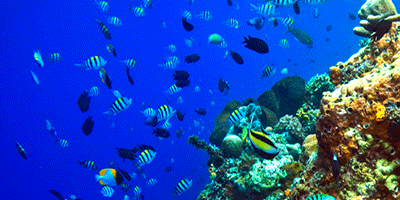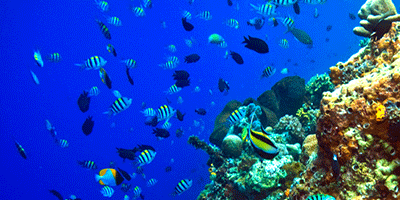Modeling Biodiversity
According to the fossil record, about 500 million years ago the number of marine species began growing exponentially and then leveled off for 200 million years before exploding again. To understand how and why these changes occurred, researchers have formulated a variety of models built upon different assumptions. Some models support the idea that biodiversity increased after stagnation, others that the increase is an artifact of how the fossils have been collected and sampled. In a paper in Physical Review Letters, Jan Nagler at the ETH Zurich, Switzerland, and colleagues from the Max Planck Institute for Dynamics and Self-Organization, Germany, present a model based on network dynamics that takes into account the role of strong fluctuations, especially extinctions, in an exponentially growing ecosystem. The results agree well with paleontological data and offer insights into the sequence of growth and stagnation.
The authors base their model on a species interdependency network that captures how a given species thrives or dies because of other species. Species can become extinct either by abiotic causes (e.g., changes in environment) or biotic causes (e.g., extinction cascades in which a species disappears, taking with it all of its dependent species). With each time step of the calculation, a species goes extinct or turns into new species, with other species dependent on it. Over time, the species percolate up and down in a hierarchical ladder of dependency.
In this model, over time, a stable situation can develop where a few species at the top are dependent on a large number of species at the bottom, increasing robustness against extinction cascades. But unstable situations can arise in which species at the top are dependent on only a few species at the bottom—extinctions of which can wipe the whole ecosystem out. Because of the way that diversity depends on relative extinction probabilities, the results provide a possible explanation for why marine biodiversity stagnated while diversity on the continents did not. – David Voss





